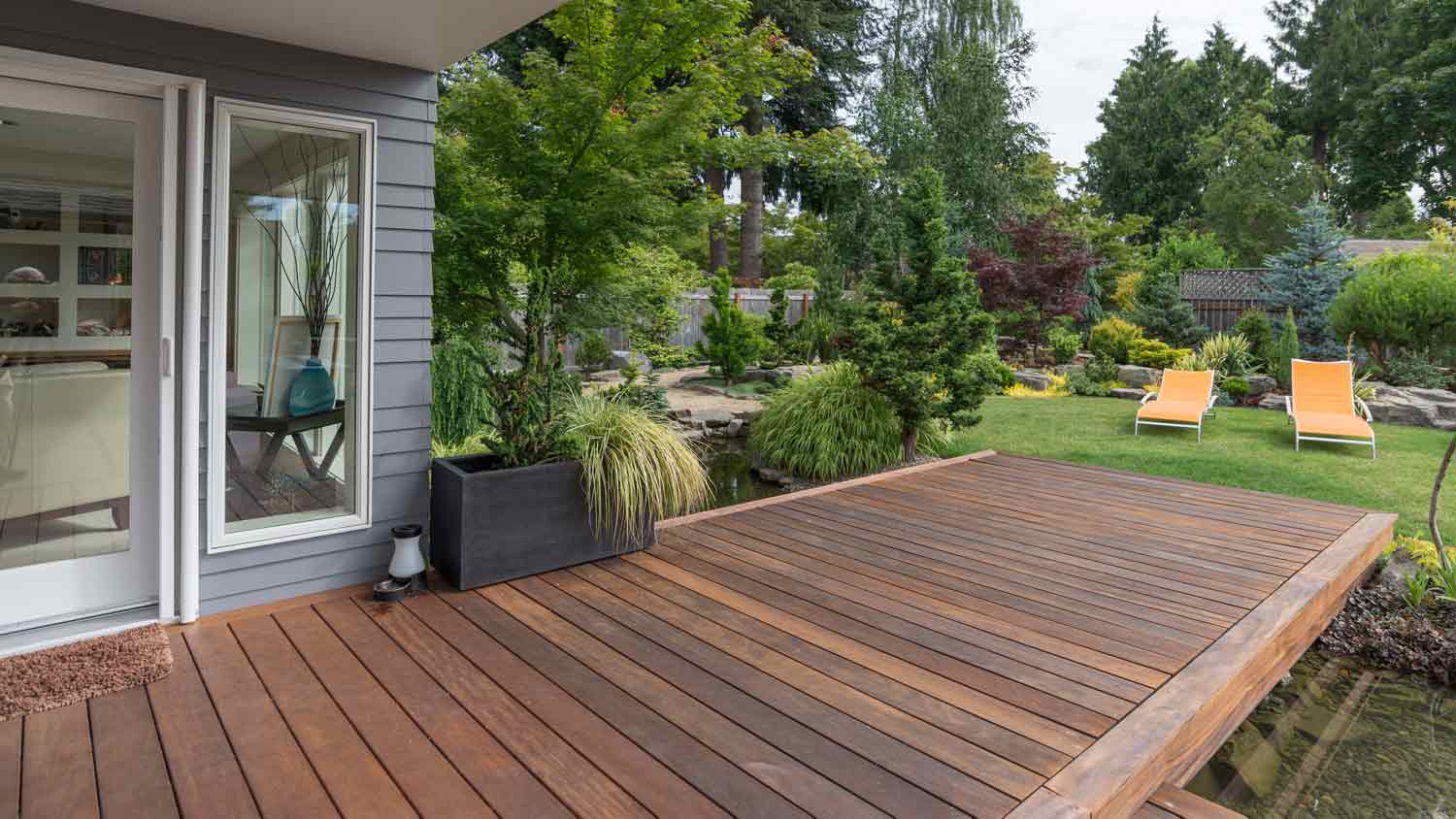
Flagstone patio costs vary by the size, material type, labor, and more. Stay tuned to see how much your flagstone patio could cost.
Give your home a grand entrance that combines form with function


A portico is a small roof supported by columns at the front of a home.
Porticos provide shelter, security, and enhanced curb appeal.
Unlike a porch, a portico is not a functional living space.
It costs $2,000 to $4,500 to add a portico to a home.
Many homes feature a small, covered entryway. It’s common across most home styles, but you may not know it by name. If it’s not quite large enough to be a porch, it may actually be a portico. These timeless structures take otherwise plain facades and make them feel luxurious. If your home needs a facelift, but you don’t want to break the bank, a portico may be the solution.
A portico is a small roof supported by columns over a front door. Homeowners can build porticos over small patios or raised stoops with steps, but the roof and columns are always essential elements of this structure.
The portico design dates back to ancient times, when ornate columns decorated temple entrances in ancient Greece. Though less ornate in modern home design, porticos are still used consistently across many architectural styles.
Porticos enhance the look of the front of a home while providing shelter as you search for your keys in bad weather. Porticos are also great for keeping guests or packages dry, and portico lighting can improve home security at night.
You can use any building material to create a portico. Most match the materials to the existing home. For example, a house with white siding and an asphalt roof pairs well with white portico columns and an asphalt portico roof.
Consider common local pests when choosing a material for your columns. Wood columns can become a home for wasps, termites, and other unwanted guests. Opt for fiberglass or concrete instead to mitigate these risks.
Although similar to a front porch, a portico has distinct characteristics. For one, porticos are too small to house furniture and aren't a space for relaxing or spending much time. They function more like an awning for protection and visual interest at the front of the home.
In contrast, a porch is a gathering space for sitting, dining, or lounging. Porches can be located on a home's front, side, or back, sometimes wrapping all the way around as one continuous structure. Porch screens can also protect them and create indoor/outdoor living spaces.
For many, the main perk of building a portico is the instant curb appeal. Adding a portico provides an immediate return on investment thanks to the added visual interest. Though commonly seen in colonial architecture, the portico design is often adapted to craftsman homes, bungalows, and many other styles.
A portico can do more than simply enhance a front door’s curb appeal. Other benefits include:
Protection for the front door, paint, and stoop from sun, rain, snow, and natural wear
Protection for residents and guests as they lock and unlock the front door
A smaller footprint that takes up less land and budget than a full porch
A timeless look that fits most home designs and never goes out of style
The average cost to build a 40-square-foot portico is around $2,500 to $4,000. This total will depend on the materials you choose for the roof and columns and the labor cost of your local porch contractor.
Many homeowners use a portico project as an opportunity to install a new type of front door or to update their existing entrance with a new front door paint color. Wiring a portico with outdoor lighting can further enhance curb appeal and home security.
From average costs to expert advice, get all the answers you need to get your job done.

Flagstone patio costs vary by the size, material type, labor, and more. Stay tuned to see how much your flagstone patio could cost.

Are your porch columns old or simply unsightly? It might be time to refresh them. Here's a breakdown of the cost of replacing porch columns.

Vinyl is a durable and relatively inexpensive choice of decking material. Your vinyl deck cost will depend on labor, the deck size, and more.

Learn how to install composite decking with some power tools and basic DIY carpentry skills. Find steps, tips, and more in this guide.

Does your deck make loud popping noises? This is a common and usually natural occurrence. Learn why popping happens in a deck and how to fix it when needed.

Discover floating deck cost estimates, including average prices, installation factors, and ways to save. Learn what impacts your floating deck cost.